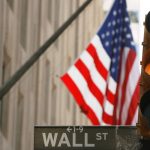By John McCrank
NEW YORK (Reuters) – The dollar edged higher on Tuesday, but was below the 20-year high it hit a day earlier, while the euro broke back above parity, as markets priced in super-sized interest rate hikes by the U.S. Federal Reserve and the European Central Bank (ECB).
The greenback has been supported by aggressive rate hikes by the Fed in an effort to reel in decades-high inflation, and economic data released on Tuesday gave the central bank no reason to hold back.
One report showed that U.S. job openings unexpectedly rose in July, while the previous month was revised sharply higher, suggesting a strong economy, despite two straight quarterly declines in gross domestic product.
“This is one critical component of the labor market that will help the Fed justify aggressive rate hikes,” said Edward Moya, senior market analyst at Oanda. “If Americans have options to get employed, the Fed can ignore the rapid deterioration with the other economic releases.”
Other data showed a bigger-than-expected rebound in U.S. consumer confidence in August after three straight monthly declines, which is potentially a positive signal for consumer spending.
Traders increased their bets on the chance of a third-straight 75-basis-point rate hike by the Fed in September to 74.5% from around 66.5% about an hour before Tuesday’s U.S. economic data was released.
The dollar index was up 0.074% at 108.73 at 3:00 p.m. Eastern time (1900 GMT), after touching 109.48 on Monday, its highest level since September 2002.
Some traders had bet the Fed would pivot to a more accommodative stance early in 2023, but those expectations were dashed on Friday when Chairman Jerome Powell said at the Jackson Hole conference in Wyoming that the central bank would raise rates and keep them high for some time.
“The dust is finally settling now post-Jackson Hole, and the question for markets is, what’s going to change the narrative? And an argument is it’s Friday’s payroll, so we’re seeing a bit of a consolidation of last week’s move playing out here,” said Simon Harvey, an FX market analyst at Monex Europe.
All eyes will be on U.S. nonfarm payrolls data for August on Friday, as any cooling in labor demand would ease pressure on the Fed to stick with outsized rate hikes.
The euro was 0.28% higher at $1.00245, rising back above parity with the greenback.
German inflation rose to its highest level in almost 50 years in August, beating a high set only three months earlier, data showed, strengthening the case for the ECB to go for a larger basis-point interest rate increase next month.
The single currency has risen over the past few sessions by aggressive pricing of expected ECB rate hikes, as well as a softening of natural gas prices, said John Hardy head of FX strategy at Saxo Bank.
British and Dutch wholesale gas prices eased on Tuesday as Europe almost reached its target of gas inventories being 80% full. [NG/EU]
Sterling fell 0.38% to $1.16615 coming off of a UK bank holiday on Monday.
The dollar was up 0.05% against the rate-sensitive Japanese yen at 138.640 yen.
Bitcoin dipped back below the $20,000 level after having hit a six-week low of $19,526 over the weekend.





